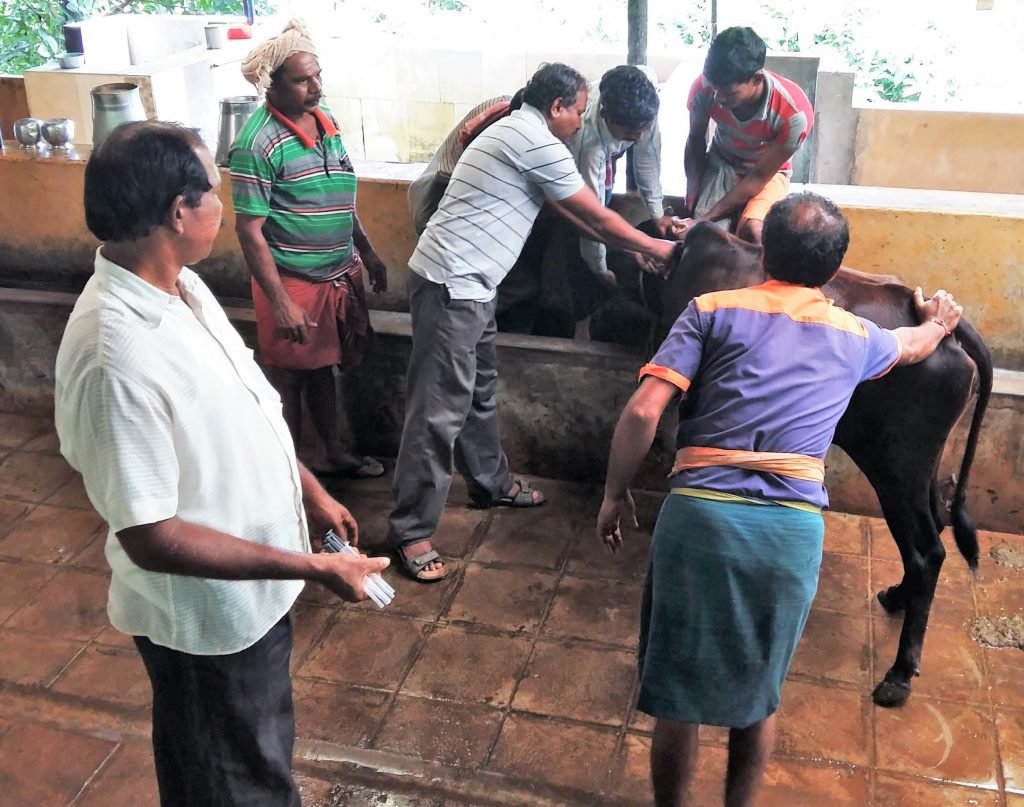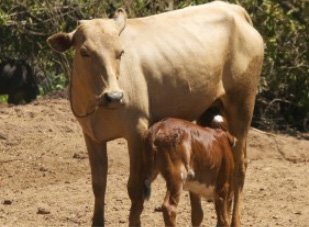How Cow Slaughter dooms civilization

To understand this subject in its correct perspective, let us travel back in time to the era of the Mughal Empire in India during the reign of its first Emperor Baber 1483-1530, who, in his will, advises his son and heir, Humayun, how important it was to respect Hindu sentiments if he wanted to rule peacefully. For that he proclaimed that killing a cow and ordaining its sacrifice should be banned in the whole of the Mughal Empire, failing which rebellion from the Indian people was a foregone conclusion.
Cow slaughter was taboo during the reigns of several other Mughal emperors such as Akbar, Jahangir, and Ahmad Shah, and even in Mysore by Hyder Ali and Tippu Sultan, with the threat of culprits standing to have their hands chopped off if they circumvented the law.
In spite of such strict edicts, one wonders how you find over 50,000 slaughterhouses in the country today.
The Cow and the Hindu Civilization
If you want to appreciate the cow’s sanctity to the Hindu religion, you must revisit India’s ancient Hindu civilization, which proscribed cows as the most sacred of all animals on the face of the planet. In fact, the word, cow is a derivation of “Gau” in Sanskrit.
Why Cows Form the Fabric of Indian Culture
From the beginning of the Hindu civilization of Ancient India, cows have been the moral fiber of the Indian people, serving them with healthy, nourishing milk, yogurt, buttermilk, butter and ghee. Besides, their yeoman service in the agricultural system is unparalleled. Ancient India could not think agriculture without a cow, which is another reason why the cow is worshipped. Cow dung and cow urine were mixed in a concoction with certain other elements as a fertilizer to apply to the barren fields to improve the soil fertility, and cow urine was an ideal natural pesticide, while buttermilk served as a wonderful fungicide. Many of you forget easily how cattle supplemented fertility of the soil and turned the soil from within without the harmful effects of chemical fertilizers, which consistently degraded the soil.
At that time, the Gaushalas or cattle shelters were prolific, and dedicated people cared for the cows and even cleaned the premises every day. At all festivals, the cows were given prominence and were taken into the owner’s house for worship and prayer for a house of plenty with food, wealth, happiness and peace.
From those happy days of highly productive agriculture with all natural inputs, when granaries were always full, and food scarcity was never heard of, we have descended into a country of want, with insufficient soil fertility due to the repeated use of chemical fertilizers that the foreign powers dumped on us to boost their sales.
Chemical fertilizers, slaughterhouses and the Advent of Hindu/Muslim Disharmony
The British wanted to expand their fertilizer industry and what better a place than India, to start? Though Mahatma Gandhi and Nehru both vowed to ban cow slaughter after the declaration of independence, they never got to do it. Lord Clive, generally considered the founder of British India, studied Indian agricultural system in depth and while he was governor of Bengal, realized that the mainstay of its success was the contribution of the Desi Indian cows, on which the life and social success of the average Indian revolved. With intent to break the agricultural strength, leading to financial security of the Indian people, Clive decided first to think of ways to destroy the Indian holy cattle, and accordingly, he opened India’s first slaughter house in Calcutta in the year 1760. Moreover, he wanted beef to feed the British population as well as their armies. With one evil stroke, he removed the ban on cow slaughter, prostitution and wine. Since Hindus would not participate in cow slaughter, he encouraged Muslims to do the job, convincing them that choice of food was their fundamental right. By this, Clive fostered the first step towards Hindu/ Muslim disharmony. The import of chemical fertilizers to keep the British factories up and running, thereby making the use of Indian cows seem irrelevant, was the final nail in the coffin. What else can we call the advent of doomsday, if not this?
This particular factor not only affects India, but the whole world as well, because, chemical pesticides and fertilizers are ruling the roost in the agricultural scene everywhere. Though some people are trying to switch over to costly organic fertilizers and pesticides, why can they not realize the benefits that our Desi Cow can provide for them and use these cows and their products like urine and dung to fertilize their soils and save their lands? Most western countries import our Desi cows for slaughter as they believe this is the most nourishing among the beef varieties in the world. However, if they would only realize the truth, and instead, use them in farming, we would not be seeing the food shortages that threaten our very existence, preempt environmental crises and wreak famine and misery in its wake, bringing us, each day a step closer to doomsday..
Help Us Now

Donate to Surabhivana Gaushala to save and protect Indian Cow Breeds.
All donations are exempt under Section 80G of the Income Tax Act, 1961. All donation receipts shall be mailed to the address given by the donor or may be collected in person, at request.
Click the below button to donate through credit cards/debit cards or Net Banking via Razor Pay.
